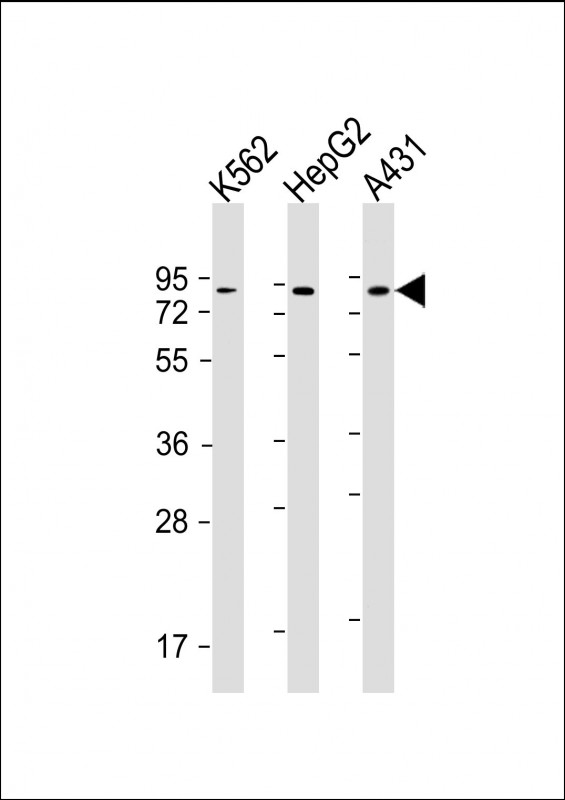
Mouse Anti-GOLGA5 antibody
Cell proliferation inducing gene 31; Cell proliferation-inducing gene 31 protein; GOGA5_HUMAN; GOLGA 5; Golgi autoantigen golgin subfamily a 5; Golgi integral membrane protein 5; Golgin 84; Golgin subfamily A member 5; Golgin-84; Golgin84; GOLIM 5; GOLIM5
View History [Clear]
Details
Product Name GOLGA5 Chinese Name 高尔基体膜相关蛋白5单克隆抗体 Alias Cell proliferation inducing gene 31; Cell proliferation-inducing gene 31 protein; GOGA5_HUMAN; GOLGA 5; Golgi autoantigen golgin subfamily a 5; Golgi integral membrane protein 5; Golgin 84; Golgin subfamily A member 5; Golgin-84; Golgin84; GOLIM 5; GOLIM5; Protein Ret-II; PTC5; Ret fused gene 5; RET fused gene 5 protein; Ret II; Ret II protein; RET-fused gene 5 protein; RFG 5; RFG5. Research Area Tumour Chromatin and nuclear signals Epigenetics Immunogen Species Mouse Clonality Monoclonal Clone NO. G3F12 React Species Human, Applications WB=1:500-2000
not yet tested in other applications.
optimal dilutions/concentrations should be determined by the end user.Theoretical molecular weight 71kDa Cellular localization The nucleus Form Liquid Concentration 1mg/ml immunogen Recombinant human GOLGA5 between 1-300 amino acid. Lsotype IgG1,k Purification affinity purified by Protein G Buffer Solution 0.01M TBS(pH7.4) with 1% BSA, 0.03% Proclin300 and 50% Glycerol. Storage Shipped at 4℃. Store at -20 °C for one year. Avoid repeated freeze/thaw cycles. Attention This product as supplied is intended for research use only, not for use in human, therapeutic or diagnostic applications. PubMed PubMed Product Detail The Golgi apparatus, which participates in glycosylation and transport of proteins and lipids in the secretory pathway, consists of a series of stacked cisternae (flattened membrane sacs). Interactions between the Golgi and microtubules are thought to be important for the reorganization of the Golgi after it fragments during mitosis. This gene encodes one of the golgins, a family of proteins localized to the Golgi. This protein is a coiled-coil membrane protein that has been postulated to play a role in vesicle tethering and docking. Translocations involving this gene and the ret proto-oncogene have been found in tumor tissues; the chimeric sequences have been designated RET-II and PTC5. [provided by RefSeq, Feb 2010].
Function:
Involved in maintaining Golgi structure. Stimulates the formation of Golgi stacks and ribbons. Involved in intra-Golgi retrograde transport. Isoform 2 functions as an A-kinase-anchoring protein.
Subunit:
Homodimer. Interacts with RAB1A that has been activated by GTP-binding, and possibly also with OCRL1. Interacts with isoform CASP of CUX1.
Subcellular Location:
Golgi apparatus membrane. Found throughout the Golgi, both on cisternae and, at higher abundance, on the tubulo-vesicular structures of the cis-Golgi network.
Tissue Specificity:
Ubiquitous. Highly expressed in seminiferous tubules and Leydig cells in testis, and detected at much lower levels in the other tissues tested. Expression is very low or not detectable in spermatozoa.
Post-translational modifications:
Highly phosphorylated during mitosis. Phosphorylation is barely detectable during interphase.
DISEASE:
Defects in GOLGA5 are a cause of thyroid papillary carcinoma (TPC) [MIM:188550]. TPC is a common tumor of the thyroid that typically arises as an irregular, solid or cystic mass from otherwise normal thyroid tissue. Papillary carcinomas are malignant neoplasm characterized by the formation of numerous, irregular, finger-like projections of fibrous stroma that is covered with a surface layer of neoplastic epithelial cells. Note=A chromosomal aberration involving GOLGA5 is found in thyroid papillary carcinomas. Translocation t(10;14)(q11;q32) with RET. The translocation generates the RET/GOLGA5 (PTC5) oncogene which was found in 2 cases of PACT in children exposed to radioactive fallout after Chernobyl.
Similarity:
Belongs to the CBFA2T family.
Contains 1 MYND-type zinc finger.
Contains 1 TAFH (NHR1) domain.
SWISS:
Q8TBA6
Gene ID:
9950
Database links:Entrez Gene: 9950 Human
SwissProt: Q8TBA6 Human
Product Picture
References (0)
No References
Bought notes(bought amounts latest0)
No one bought this product
User Comment(Total0User Comment Num)
- No comment



 +86 571 56623320
+86 571 56623320
 +86 18668110335
+86 18668110335

